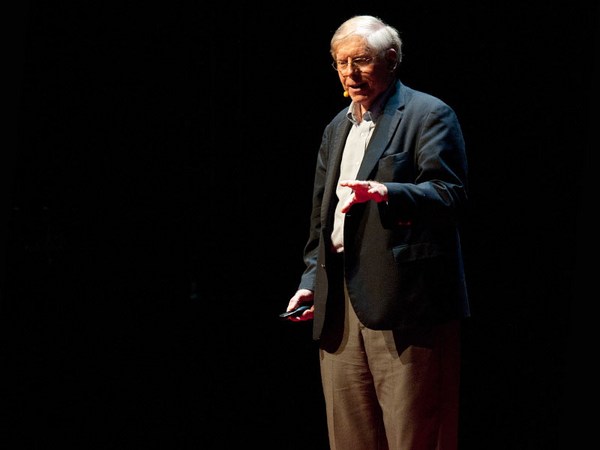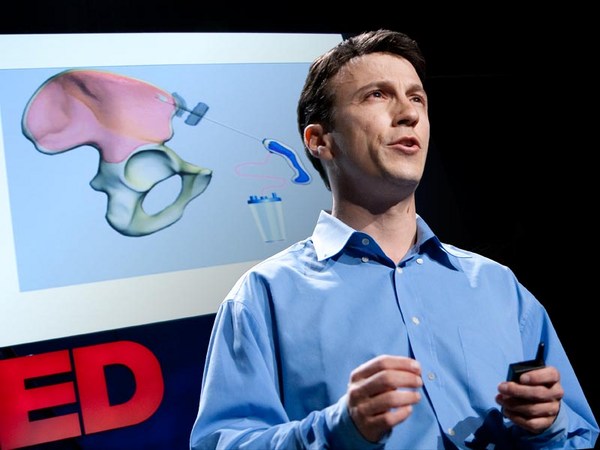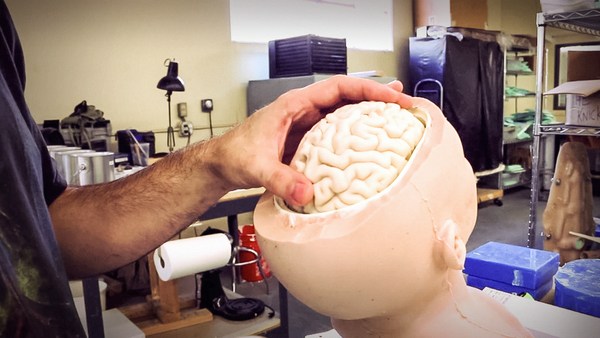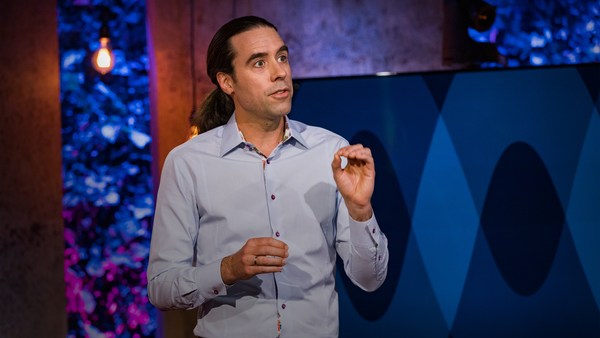I'm a process engineer, I know all about boilers and incinerators and fabric filters, and cyclones, and things like that. But I also have Marfan syndrome. This is an inherited disorder. And in 1992, I participated in a genetic study, and found to my horror, as you can see from the slide, that my ascending aorta was not in the normal range, the green line at the bottom. Everyone in here will be between 3.2-3.6, and I was already up at 4.4. And as you can see, my aorta dilated progressively, and I got closer and closer to the point where surgery was going to be necessary.
The surgery on offer was pretty gruesome. Anesthetize you, open your chest, put you on an artificial heart and lung machine, drop your body temperature to about 18 centigrade, stop your heart, cut the aorta out, replace it with a plastic valve and a plastic aorta. And most importantly, commit you to a lifetime of anticoagulation therapy. Normally, warfarin. The thought of the surgery was not attractive. The thought of the warfarin was really quite frightening.
So I said to myself, "I'm an engineer, I'm in R&D, this is just a plumbing problem." "I can do this, I can change this." So I set out to change the entire treatment for aortic dilation. The project aim is really quite simple. The only real problem with the ascending aorta in people with Marfan syndrome is that it lacks some tensile strength. So, the possibility exists to simply externally wrap the pipe, and it would remain stable and operate quite happily. If your high-pressure hose pipe or hydraulic line bulges a little, you just wrap some tape around it, it really is that simple. In concept, though not in execution. The great advantage of an external support, for me, was that I could retain all of my own bits, all of my own endothelium and valves, and not need any anticoagulation therapy.
So, where do we start? This is a sagittal slice through me. In the middle, you can see that little structure squeezing out, that's the left ventricle, pushing blood out through the aortic valve. You can see two of the leaflets of the aortic valve working there. Up into the ascending aorta. And it's that part, the ascending aorta, which dilates and ultimately bursts, which of course is fatal. We started by organizing image acquisition from magnetic resonance and CT imaging machines, from which to make a model of the patient's aorta.
This is a model of my aorta. I've got a real one in my pocket, if anyone would like to look at it, and play with it.
(Laughter)
You can see it's quite a complex structure. It has a funny tri-lobal shape at the bottom, which contains the aortic valve. It then comes back into a round form, and then tapers and curves off. It's quite a difficult structure to produce. This is a sort of CAD model of me, and this is one of the later CAD models. We went through an iterative process of producing better and better models. When we produced that model, we turned it into a solid, plastic model, as you can see, using a rapid prototyping technique, another engineering technique. We then used that former to manufacture a perfectly bespoke porous textile mesh, which takes the shape of the former and perfectly fits the aorta. So this is absolutely personalized medicine at its best, really. Every patient we do has an absolutely bespoke implant.
Once you've made it, the installation is quite easy. John Pepper, bless his heart, professor of cardiothoracic surgery. Never done it before in his life, he put the first one in, didn't like it, he put the second one in. Happy, away I went. Four and a half hours on the table, and everything was done. So the surgical implantation was actually the easiest part.
If you compare our new treatment to the existing alternative, the composite aortic root graft, there are one or two startling comparisons which I'm sure will be clear to all of you. Two hours to install one of our devices, compared to 6 hours for the existing treatment. As I said, the existing treatment requires the heart-lung bypass machine, and it requires a total body cooling. We don't need any of that. We work on a beating heart. He opens you up, he accesses the aorta while your heart is beating, all at the right temperature. No breaking into your circulatory system. So it really is great.
But for me, absolutely the best point is, there is no anticoagulation therapy required. I don't take any drugs at all, other than recreational ones that I would choose to take.
(Laughter)
And in fact, if you speak to people who are on long-term warfarin, it is a serious compromise to your quality of life, and even worse, it inevitably foreshortens your life. Likewise, if you have the artificial valve option, you're committed to antibiotic therapy whenever you have any intrusive medical treatment, even trips to the dentist require that you take antibiotics, in case you get an internal infection on the valve. Again, I don't have any of that, so I'm entirely free, my artery is fixed. I haven't got to worry about it, which is a rebirth for me.
Back to the theme of the presentation, multidisciplinary research, how on earth does a process engineer used to working with boilers end up producing a medical device which transforms his own life? Well, the answer to that is, a multidisciplinary team. This is a list of the core team, and you can see there aren't only two principal technical disciplines there, medicine and engineering, but also, there are various specialists from within those two disciplines. John Pepper was the cardiac surgeon who did all the actual work on me. But everyone else had to contribute one way or another. Raad Mohiaddin, a medical radiologist. We had to get good-quality images from which to make the CAD model. Warren Thornton, who still does all our CAD models for us, had to write a bespoke piece of CAD code to produce this model from this really rather difficult input data set.
There are some barriers to this, though, there are some problems. Jargon is a big one. I would think no one in this room understands the first four jargon points. The engineers amongst you will recognize "rapid prototyping" and "CAD." The medics amongst you, if there are any, will recognize the first two, but there will be nobody else here that understands all those four words. Taking the jargon out was very important to ensure that everyone in the team understood exactly what was meant when a particular phrase was used.
Our disciplinary conventions were funny as well. We took a lot of horizontal slice images through me, produced those slices and used them to build a CAD model. And the very first CAD model we made, the surgeons were playing with it and couldn't quite figure it out. And then we realized that it was actually a mirror image of the real aorta. And it was a mirror image because in the real world, we always look down on plans, plans of houses, or streets, or maps. In the medical world, they look up at plans. So the horizontal images were all in inversion. So, one needs to be careful with disciplinary conventions. Everyone needs to understand what is assumed and what is not.
Institutional barriers were another serious headache in the project. The Brompton Hospital was taken over by the Imperial College School of Medicine. And there are some seriously bad relationship problems between the two organizations. I was working with the Imperial and the Brompton, and this generated some serious problems for the project. Really, problems that shouldn't exist.
Research & Ethics Committee. If you want to do anything new in surgery, you have to get a license from your local Research & Ethics. I'm sure it's the same in Poland. There will be some form of equivalent which licenses new types of surgery. We didn't only have the bureaucratic problems associated with that, we also had professional jealousies. There were people on the Research & Ethics committee who really didn't want to see John Pepper succeed again. Because he is so successful. And they made extra problems for us.
Bureaucratic problems. Ultimately, when you have a new treatment, you have to have a guidance note for all the hospitals in the country. In the UK, we have the National Institute and Clinical Excellence. You have an equivalent in Poland, no doubt. And we had to get past the NICE problem. We now have a great clinical guidance, out on the net. So any other hospitals interested can come along, read the NICE report, get in touch with us, and then get doing it themselves.
Funding barriers, another big area to be concerned with. A big problem with understanding one of those perspectives. When we first approached one of the big, charitable UK organizations that fund this kind of stuff, we essentially gave them an engineering proposal. They didn't understand it, they were doctors, next to God, it must be rubbish, they binned it. So in the end, I went after private investors, just gave up on it. Most R&D is going to be institutionally funded, by the Polish Academy of Sciences or the Engineering and Physical Sciences Research Council, or whatever. And you need to get past those people.
Jargon is a huge problem when you try to work across disciplines, because in an engineering world, we all understand CAD and RP. Not in the medical world. I suppose the funding bureaucrats ultimately have to get their act together. They've really got to start talking to each other, and exercise a bit of imagination, if that's not too much to ask.
(Laughter)
Which it probably is.
(Laughter)
I've coined the phrase "obstructive conservatism." So many people in the medical world don't want to change. Particularly when some jumped-up engineer has come along with the answer. They don't want to change. They simply want to do whatever they've done before. And in fact, many surgeons in the UK are still waiting for one of our patients to have some sort of an episode, so that they could say, "Told you that was no good." We've actually got 30 patients. At seven and a half years, we've got 90 post-op patient years between us, and we haven't had a single problem. And still, there are people in the UK saying, "That external aortic root, it will never work, you know."
It really is a problem. I'm sure everyone in this room has come across arrogance amongst medics, doctors, surgeons, at some point. The middle point is simply the way that the doctors protect themselves. "Well, of course, I'm looking after my patient." I think it's not good, but that's my view.
Egos, of course, again a huge problem. If you work in a multidisciplinary team, you've got to give your guys the benefit of the doubt, you've got to express support for them. Tom Treasure, professor of cardiothoracic surgery. Incredible guy. Dead easy to give him respect. Him giving me respect? Slightly different.
(Laughter)
That's all the bad news. The good news is, the benefits are stonkingly huge. Translate that one! I bet they can't.
(Laughter)
When you have a group of people with different professional training, a different professional experience, they not only have a different knowledge base, but also a different perspective on everything. And if you can bring them together, and get them talking and understanding each other, the results can be spectacular. You can find really novel solutions that have never been looked at before, very quickly and easily. You can short-cut huge amounts of work simply by using the extended knowledge base you have. And as a result, it's an entirely different use of the technology and the knowledge around you.
The result of all this is that you can get incredibly quick progress on incredibly small budgets. I'm so embarrassed at how cheap it was to get from my idea to me being implanted that I'm not prepared to tell you what it cost, because I suspect there are absolutely standard surgical treatments, probably in the USA, which cost more for a one-off patient than the cost of us getting from my dream to my reality.
That's all I want to say, and I've got three minutes left. So, Ewa's going to like me. If you have any questions, please come up and talk to me later on, it would be a pleasure to speak with you.
Many thanks.
(Applause)





